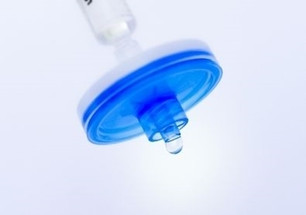Posted by Chrom Tech on 15th Oct 2025
Fundamentals of Sample Preparation for Chromatography

Sample preparation is one of the most crucial steps in chromatography. It involves isolating analytes of interest from the sample matrix to ensure accurate, reproducible, and contamination-free results. Proper preparation minimizes matrix interference, preserves the integrity of chromatography columns, and reduces injector contamination. Without appropriate preparation, analytical precision and column longevity are at risk.
Understanding the core techniques—such as filtration, extraction methods, protein precipitation, and dilute-and-shoot—is essential for reliable chromatography performance.
The Role of Filtration in Sample Preparation
Filtration removes particulates before analysis, preventing clogs and pressure spikes while extending column life. Common filtration tools include syringe filters, centrifuge filters, and filter vials.
Syringe Filters
Chrom Tech syringe filters are single-use cartridges that attach to a syringe to remove particles from liquid samples before injection. They are commonly used for HPLC and ion chromatography applications.
When selecting a syringe filter, consider:
- Volume: Match the filter diameter to your sample volume.
- Porosity: Choose based on the size of particulates (e.g., 0.2 µm or 0.45 µm).
- Membrane type: Ensure compatibility with your solvent and analyte.
Centrifuge Filters
Centrifuge filters use centrifugal force to separate particulates from liquid samples. Samples are placed in a filter device and spun at high speed, allowing the filtrate to collect in the lower chamber. This technique provides quick separation and minimizes manual handling.
Filter Vials
Filter vials combine filtration and vial storage into one device. The sample is pipetted into the vial, and a plunger with an integrated membrane filter pushes the sample through. This allows direct filtration into the vial, minimizing sample loss and contamination risk compared to using separate syringes and filters.
Solid-Phase Extraction (SPE)
Solid-phase extraction (SPE) is a selective purification method that removes interferences and concentrates analytes before chromatography. By applying the principles of liquid chromatography, SPE enhances recovery and sensitivity while reducing matrix effects such as ion suppression in LC/MS applications.
Key benefits of SPE include:
- Simplifies complex matrices
- Improves analyte purity
- Enhances detection limits for trace compounds
Liquid-Liquid Extraction (LLE)
Liquid-liquid extraction separates analytes based on solubility differences between two immiscible phases. After adding a solvent and agitating, analytes partition between the phases. Once separated, the analyte-rich layer is collected for analysis.
While effective, LLE can be time-consuming and solvent-intensive. To streamline workflows, Chrom Tech recommends Agilent Chem Elut S Supported Liquid Extraction (SLE) products. These provide reproducible, high-quality results by eliminating emulsions, reducing solvent use, and improving matrix removal. Consistent pore size and uniform flow ensure batch-to-batch repeatability, reducing variability between analysts.
Protein Precipitation (“Protein Crash”)
Protein precipitation removes proteins that can clog columns and interfere with analyte detection. This method uses organic solvents such as acetonitrile or methanol to precipitate proteins, which are then separated via filtration or centrifugation. The remaining supernatant, containing the analytes of interest, is ready for analysis.
Protein crash is widely used in bioanalytical applications for rapid sample cleanup and consistent recovery of small molecules.
Dilute and Shoot
The dilute and shoot method is a fast, low-cost approach to sample preparation. Samples are diluted with solvent to minimize matrix effects and directly injected into the chromatographic system.
While this method is efficient, excessive dilution can lower analyte concentrations, making it difficult to detect trace compounds. For routine applications with clean matrices, however, dilute and shoot offers a highly efficient workflow.
Summary
Effective sample preparation is key to achieving reproducible, accurate chromatography results. Each technique—filtration, solid-phase extraction, liquid-liquid extraction, protein crash, and dilute and shoot—plays a unique role in removing contaminants and protecting your chromatography system.
Investing in high-quality chromatography consumables from Chrom Tech helps ensure optimal system performance and longevity. Our technical specialists are available to help you select the right products for your workflow and improve your lab’s efficiency.
Frequently Asked Questions About Sample Preparation
Why is sample preparation important in chromatography?
Sample preparation removes particulates, proteins, and interfering compounds that could damage columns or alter analytical results. Proper preparation ensures consistent, accurate chromatography performance.
Which sample preparation technique should I use?
The best technique depends on your sample type and target analyte. Filtration and protein crash are ideal for quick cleanup, while SPE and SLE offer higher selectivity for complex matrices.
What is the advantage of using Supported Liquid Extraction (SLE) over LLE?
SLE simplifies the workflow, reduces solvent consumption, and avoids emulsions. It provides reproducible recovery and cleaner extracts with less analyst variability.

